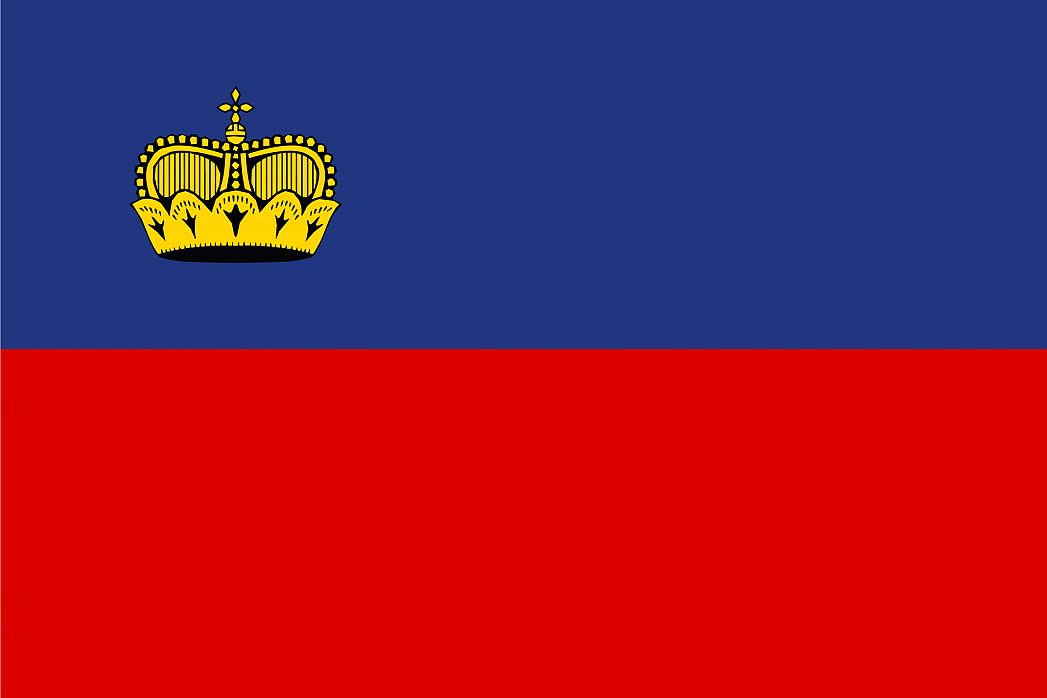Liechtenstein’s flag consists of two horizontal red and blue bands, with blue on top of the red. On the left-hand-side of the blue band is a golden crown. Initially, the golden crown wasn’t in this flag, but during the Summer Olympics held in 1936, it was realized that Liechtenstein’s flag and that of Haiti looked similar. The following year Liechtenstein added the golden crown to bring out the difference as well as to signify Liechtenstein’s position as a princedom. Known as The Flag of Liechtenstein, or Flagge Liechtenstein in German, it has been the flag of the Principality of Liechtenstein since 1921 when it was adopted and enshrined officially in the nation’s constitution.
The blue and red colors were chosen over the golden and red that is on the coat of arms. This is because both colors carry cultural, regional and political meanings. The blue color represents the sky while the red color alludes the evening fires that Liechtensteiners light inside their houses throughout the principality. The golden crown is a symbol of the unity of the people of Liechtenstein and their prince. Some sources, however, describe the crown as yellow and not golden.
Between the period between the years 1719 and 1866, the two colors, red and blue, were chosen to feature in the flag. Their first utilization was in 1764 by Prince Joseph Wenzel. However, in 1921 a new constitution was formulated, and it granted the flag "official status". However, the government has three flags, one Standard of the Prince of Liechtenstein, Standard of the Government of Liechtenstein and Banner of the Princely House of Liechtenstein. Besides, each of the eleven municipalities has its own flag.
This flag has undergone different changes from time to time. In Liechtenstein's early days, it was still a principality within the ancient Holy Roman Empire. Its flag by then was simply constituted of two yellow and red bands running horizontally. However, in 1852, Liechtenstein gained independence and replaced the yellow color with blue. This time, they ran vertically and not horizontally. The 1921 constitution however granted the flag official status and as a result they vertical bands ran horizontally. This was until 1937 when they realized that the flag was identical to that of Haiti in 1936. In1937, a golden princely crown was added in the top left corner of the flag.
This page was last modified on May 1st, 2018
More on Graphicmaps

Published on 2019-11-06
What is a Trade Embargo?

Published on 2019-11-04
Which Two Countries Used to Have the Same Flag?

Published on 2019-09-16
What Is the Only Two-Sided State Flag?

Published on 2019-09-16
Which Country Flag Looks Like the Texas Flag?

Published on 2019-08-29
Flags That Resemble the US Flag

Published on 2019-08-20
